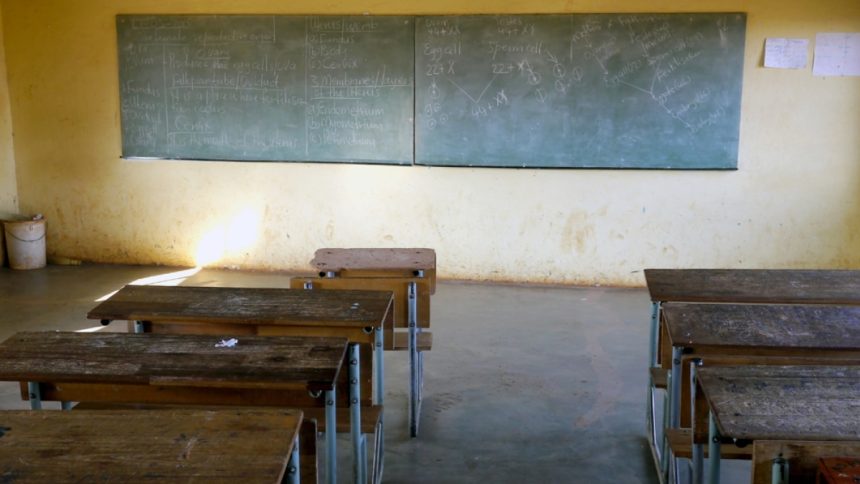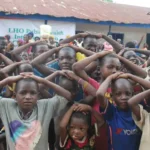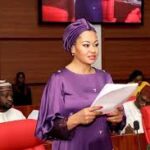[ad_1]
Education is a fundamental human right. It has the power to raise people and populations out of poverty, level inequalities, and ensure sustainable development.
Yet, millions of children around the world are not safe at school. According to the latest United Nations estimate, 246 million girls and boys experience violence in and around schools every year. For these children, school is not a place where they can explore and thrive, but somewhere they are exposed to physical, psychological, or even sexual violence.
School-related gender-based violence – ranging from bullying and unwelcome sexual advances to groping and rape – is causing severe, long-term psychological and social harm to countless children. It has to stop.
I say this because I know how it feels to be sexually abused as a child. How much it hurts to fear people you are told to trust. How isolating it can be to not feel safe in the very places you are supposed to be protected.
My abuse happened when I was 10. It was my uncle who abused me. As I reeled in pain he looked me in the eye and smiled. I couldn’t believe that I had escaped a neighbour who tried to violate me when I was younger – saved by his sister who walked in – only to be abused by a family member in my own home, a place I considered safe.
I was ashamed to tell my parents and terrified of the stigmatisation that would come with being branded as “the girl who was abused”. So I stayed silent, even though inside I was screaming.
Knowing that home was no longer a safe space, I asked my parents to send me to a boarding school. I thought I would be safe there as my uncle would not have access to me. At that innocent age, I believed schools to be places where children are always safe, cared for, and happy.
I was wrong. At my new school, teachers were sexually harassing students with impunity. Unable to stop the abuse I witnessed, I found myself trapped in my trauma and fear. I could see the same feelings of terror and helplessness on the faces of my friends. We were not learning, developing and thriving like we knew we could and should have been. Our education and development were suppressed by a culture of sexual violence against children, girls especially.
At just 12 years old, in the darkest crevices of my shattered innocence, a spark of resilience emerged: I was not going to let this oppression define me. So, influenced by what I had seen and experienced, and determined to be a beacon of justice for girls scared by abuse like myself, I decided to become a lawyer.
Fast forward to the present, I am an advocate of the High Court of Kenya and have dedicated my career to achieving a more equitable world and ending gender-based violence against children, at schools and beyond.
As Africa Campaign Manager for the Brave Movement, I am working alongside many other brave survivors of childhood sexual abuse to create a new, better world in which no child experiences what I did.
In Africa, school-related gender-based violence is rife. Abuse happens in classrooms, on school grounds, or on the way to school. While girls are statistically more vulnerable, boys too are affected. The specifics differ from country to country and region to region, but gender-based violence is limiting children’s capacity to flourish and realise their potential in one way or the other at schools all across the continent.
We need to do something to protect them, and we need to do something fast.
You may ask, with millions and millions of children potentially affected, where can we even begin to address such a huge problem?
The good news is we already know what to do. There is a growing body of research and evidence around best practices in ending school-related gender-based violence. We know what works.
This week, at Women Deliver 2023 in Kigali, Rwanda, the Safe to Learn Global Advocacy Taskforce, of which the Brave Movement is a member, launched a new youth and survivor-led advocacy brief on school-related gender-based violence.
Guided by the views, experiences and recommendations of survivors and youth activists, this is what we think should be done to safeguard children in schools:
1- Governments should formulate and enforce comprehensive policies that are aimed at addressing school-related gender-based violence, unequivocally prohibiting all forms of violence, harassment, and discrimination within educational settings. These policies must be accompanied by robust reporting mechanisms and accountability frameworks to ensure their effective implementation.
2- Teachers should be provided with sufficient training on gender-sensitive and inclusive teaching methodologies, as well as guidance on preventing, identifying and responding to school-related gender-based violence. For teachers to become active agents in sexual violence prevention and response in schools, they need to be taught that they are not only educators but also protectors of the children in their care.
3- We should all work to raise awareness about this widespread but rarely talked about problem. Comprehensive awareness campaigns play a crucial role in nurturing a culture of respect and promoting gender equality. This ladders up to fostering safe and inclusive learning environments.
With every step taken to implement these essential changes, this very big problem becomes a tiny bit smaller. With every ally and supporter that joins our movement, the weight of the challenge becomes that little bit lighter.
As my own daughters and son reach the age at which I first encountered my abuser, I am more motivated than ever before to provide them and all their peers with a learning environment in which they can feel safe. I hope that the education they receive will unlock countless opportunities for them, but I remain wary of the dangers they could encounter along the way.
It doesn’t have to be this way. It will take time and require the buy-in of actors at the highest level right through to the grassroots, but we can win this fight, if we all work together.
Children are our future, and it is on all of us to keep them safe.
The views expressed in this article are the author’s own and do not necessarily reflect Al Jazeera’s editorial stance.
[ad_2]
Source link









